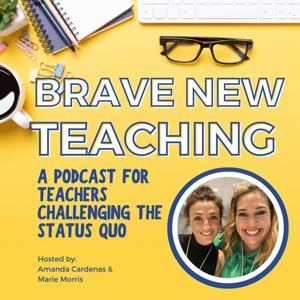The other day I found myself walking through a parking garage stairwell in Iowa City, and I realized they were using the same scent design as the local mall in Bratislava where we used to live. Half-shocked, half-amused, I climbed the cement stairs as I remembered riding the escalator through the same subtle scent cloud two years ago. The memory was visceral.
Though we don't always think about it, our sensory experiences have a strong impact on how we feel and how we work. I do my best work in a situation where I feel comfortable. In fact, I generally prefer not to work at home because step one, for me, to working at home is often to clean the entire house, put music on, light a candle, pick flowers, make tea, etc. and so I spent an hour prepping to work before I do anything.
I bet you've already put considerable time and effort into making your classroom a space where you feel comfortable and where students feel welcome. Today isn't about changing any of that; it's just about finding small places where you might be able to tune your sensory dashboard in class to make it work even better for you and your kiddos. By thinking specifically about the five senses - just like we have students do in their writing - you can find easy wins to make the workspace more welcoming, energizing, and comfortable for everyone inside.
Throughout this podcast, and all the ones in this series, I'm showcasing graphics and displays from the #evolvingEDdesign Toolkit, a vast free resource I made for you.
You can grab it here: https://sparkcreativity.kartra.com/page/evolvingEDdesign
Please share your classroom design stories, questions, photos and ideas with the #evolvingEDdesign hashtag across platforms so we can continue the conversation off the pod!
Go Further:
Explore alllll the Episodes of The Spark Creativity Teacher Podcast.
Snag three free weeks of community-building attendance question slides
Join our community, Creative High School English, on Facebook.
Come hang out on Instagram.
Enjoying the podcast? Please consider sharing it with a friend, snagging a screenshot to share on the 'gram, or tapping those ⭐⭐⭐⭐⭐ to help others discover the show. Thank you!
Links Mentioned:
Edutopia Article on Fidgets
Scottish Castle Fireplace Video
Nasa Space Images Video
Fun Stanford d.School Timer for Class Work (one of many they've created!)
Sources Considered, Consulted, and Cited for this Series & for the Toolkit:
Abdaal, Ali. Feel Good Productivity. Celadon Books, 2023.
"Aesthetics and Academic Spaces." Teachers College, Columbia University Youtube Channel: Curriculum Encounters Podcast, Episode 4. https://www.youtube.com/playlist?list=PLuFs4Fyk-v0Bwtuy1eQJ3JkRTeL4Sjyz4 Accessed Oct. 21, 2025.
Chavez, Felicia. The Anti-Racist Writing Workshop. Haymarket Books, 2021.
Dintersmith, Ted. Documentary: Most Likely to Succeed. 2015.
Dintersmith, Ted. What Schools Could Be. Princeton University Press, 2018.
Doorley, Scott & Witthoft, Doorley. make space: How to Set the Stage for Creative Collaboration. John Wiley and Sons, 2012.
"Exploring Google's Headquarters in San Francisco." Digiprith Youtube Channel: https://www.youtube.com/watch?v=WxGqbmFf9Qc. Accessed October 13, 2015.
"High Tech High Virtual Tour." High Tech High Unboxed Youtube Channel: https://www.youtube.com/watch?v=87xU9smFrj0 . Accessed October 15, 2025.
"Inside YouTube's Biggest Office In America | Google's YouTube Headquarters Office Tour." The Roaming Jola Youtube Channel. https://www.youtube.com/watch?v=P26fDfFBx8I . Accessed October 14, 2025.
Novak, Katie. Universal Design for Learning in English Language Arts. Cast Inc., 2023.
Potash, Betsy. "Research-Based Practices to Ignite Creativity, with Dr. Zorana Ivcevic Pringle." The Spark Creativity Teacher Podcast, Episode 393.
Pringle, Zorana Ivcevic. The Creativity Choice. Public Affairs, 2025.
Ritchart, Ron and David Perkins. "Making Thinking Visible." Educational Leadership, February 2008, p.p. 57-61. https://pz.harvard.edu/sites/default/files/makingthinkingvisibleEL.pdf. Accessed October 13, 2025.
Richardson, Carmen and Punya Mishra. "Scale: Support of Creativity in a Learning Environment," 2017. Accessed through Drive with permission.
Richardson, Carmen and Punya Mishra. "Learning environments that support student creativity: Developing the SCALE." Thinking Skills and Creativity, Volume 27, March 2018, p.p. 45-54. Accessed online at https://doi-org.proxy2.cl.msu.edu/10.1016/j.tsc.2017.11.004, October 13, 2025.
"Sensory Inquiry and Social Spaces." Teachers College, Columbia University Youtube Channel: Curriculum Encounters Podcast, Episode 2. https://www.youtube.com/watch?v=DtD_-k5QmOQ&list=PLuFs4Fyk-v0Bwtuy1eQJ3JkRTeL4Sjyz4&index=2 Accessed Oct. 23, 2025.
Stockman, Angela. Make Writing: 5 Strategies that turn Writer's Workshop into a Maker Space. Hack Learning Series, 2015.
Terada, Yuki. "Do Fidgets help Students Focus?" Edutopia Online: https://www.edutopia.org/article/do-fidgets-help-students-focus/. Accessed 4 November 2025.
Utley, Jeremy. "Masters of Creativity (Education Edition) #1: Input Obsession (Design Thinking)." Stanford d.School Youtube channel: https://www.youtube.com/watch?v=LosDd3Q0yQw . Accessed October 15, 2025.
Utley, Jeremy and Kathryn Segovia. "Masters of Creativity: Updating the Creative Operating System (Design Thinking)." Stanford d.School Youtube channel: https://www.youtube.com/watch?v=Ggza7df7N7Y&t=2233s. Accessed October 17, 2025.
"What is Curriculum and Where Might we Find It?" Teachers College, Columbia University Youtube Channel: Curriculum Encounters Podcast, Episode 4. https://www.youtube.com/watch?v=yh_UhGATVwM&list=PLuFs4Fyk-v0Bwtuy1eQJ3JkRTeL4Sjyz4&index=1 Accessed Oct. 23, 2025.




































